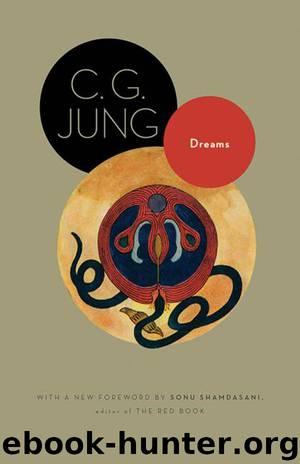Dreams by C. G. Jung

Author:C. G. Jung
Language: eng
Format: epub
Publisher: Princeton University Press
Published: 1974-06-27T16:00:00+00:00
30. The red-and-white rose, the “golden flower” of alchemy, as birthplace of the filius philosophorum.—“Ripley Scrowle” (MS., 1588)
18. DREAM:
102
A man offers him some golden coins in his outstretched hand. The dreamer indignantly throws them to the ground and immediately afterwards deeply regrets his action. A variety performance then takes place in an enclosed space.
103
The blue flower has already begun to drag its history after it. The “gold” is offered and is indignantly refused. Such a misinterpretation of the aurum philosophicum is easy to understand. But hardly has it happened when there comes a pang of remorse that the precious secret has been rejected and a wrong answer given to the riddle of the Sphinx. The same thing happened to the hero in Meyrink’s Golem, when the ghost offered him a handful of grain which he spurned. The gross materiality of the yellow metal with its odious fiscal flavour, and the mean look of the grain, make both rejections comprehensible enough—but that is precisely why it is so hard to find the lapis: it is exilis, uncomely, it is thrown out into the street or on the dung-hill, it is the commonest thing to be picked up anywhere—“in planitie, in montibus et aquis.” It has this “ordinary” aspect in common with Spitteler’s jewel in Prometheus and Epimetheus, which, for the same reason, was also not recognized by the worldly wise. But “the stone which the builders rejected, the same is become the head of the corner,” and the intuition of this possibility arouses the liveliest regret in the dreamer.
104
It is all part of the banality of its outward aspect that the gold is minted, i.e., shaped into coins, stamped, and valued. Applied psychologically, this is just what Nietzsche refuses to do in his Zarathustra: to give names to the virtues. By being shaped and named, psychic life is broken down into coined and valued units. But this is possible only because it is intrinsically a great variety of things, an accumulation of unintegrated hereditary units. Natural man is not a “self”—he is the mass and a particle in the mass, collective to such a degree that he is not even sure of his own ego. That is why since time immemorial he has needed the transformation mysteries to turn him into something, and to rescue him from the animal collective psyche, which is nothing but a variété.
105
But if we reject this unseemly variété of man “as he is,” it is impossible for him to attain integration, to become a self.34 And that amounts to spiritual death. Life that just happens in and for itself is not real life; it is real only when it is known. Only a unified personality can experience life, not that personality which is split up into partial aspects, that bundle of odds and ends which also calls itself “man.” The dangerous plurality already hinted at in dream 4 (par. 58) is compensated in vision 5 (par. 62), where the snake describes a magic circle and thus marks off the taboo area, the temenos (fig.
Download
This site does not store any files on its server. We only index and link to content provided by other sites. Please contact the content providers to delete copyright contents if any and email us, we'll remove relevant links or contents immediately.
Rewire Your Anxious Brain by Catherine M. Pittman(17590)
Talking to Strangers by Malcolm Gladwell(11880)
The Art of Thinking Clearly by Rolf Dobelli(8843)
Mindhunter: Inside the FBI's Elite Serial Crime Unit by John E. Douglas & Mark Olshaker(7835)
Becoming Supernatural by Dr. Joe Dispenza(7107)
Change Your Questions, Change Your Life by Marilee Adams(6641)
The Road Less Traveled by M. Scott Peck(6636)
Nudge - Improving Decisions about Health, Wealth, and Happiness by Thaler Sunstein(6634)
The Lost Art of Listening by Michael P. Nichols(6474)
Enlightenment Now: The Case for Reason, Science, Humanism, and Progress by Steven Pinker(6407)
Win Bigly by Scott Adams(6313)
Mastermind: How to Think Like Sherlock Holmes by Maria Konnikova(6236)
The Way of Zen by Alan W. Watts(5800)
Daring Greatly by Brene Brown(5643)
Grit by Angela Duckworth(4738)
Big Magic: Creative Living Beyond Fear by Elizabeth Gilbert(4723)
Men In Love by Nancy Friday(4327)
Flow by Mihaly Csikszentmihalyi(4053)
The Four Tendencies by Gretchen Rubin(4024)
